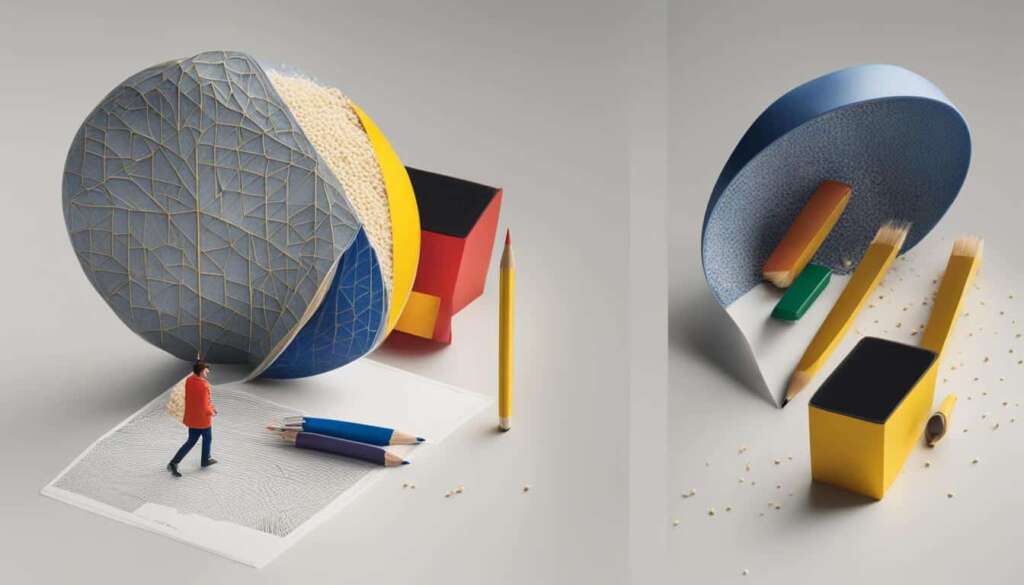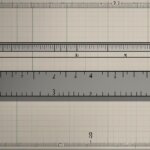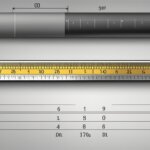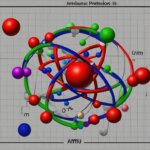Table of Contents
In the world of measurement, there are various units that help us quantify distances and lengths. One such unit is the millimeter (mm). In this article, we will delve into the definition and importance of millimeters, their everyday applications, their role in precision measurements, their significance in science and technology, and even how they can be converted and compared to other units of length.
So, what exactly is a millimeter? A millimeter is a small unit of measurement in the metric system, specifically the International System of Units (SI). It is equal to one-thousandth of a meter, making it a tiny yet essential component of scientific, engineering, technological, and mathematical calculations.
The metric system, based on decimals, allows for easy conversions and consistency in measurements. For instance, 10 millimeters make up a centimeter, while 1000 millimeters make up a meter. The word “meter” itself originates from Greek, meaning “measure.”
While millimeters may seem minuscule, they play a crucial role in everyday sizing. Many products like clothing, jewelry, and electronics use millimeter measurements for accurate fits and dimensions. Whether it’s choosing the right ring size or ensuring precise construction and carpentry work, millimeters are vital in achieving accuracy.
In precision measurements, where exactness is paramount, millimeters shine. Whether it’s determining the dimensions of components, the alignment of optical instruments, or the accuracy of machine parts, millimeters provide the necessary precision.
Millimeters also find extensive applications in science and technology. In fields like nanotechnology, materials science, optics, and telecommunications, millimeters are used to measure and manipulate materials at the atomic or molecular scale, transmit data wirelessly, and study celestial objects and phenomena in astronomy and astrophysics.
Understanding the conversion and comparison of millimeters to other units of length is essential for effective communication and consistency in measurements. By converting millimeters to centimeters, meters, or kilometers, we can ensure that measurements across different systems are easily understood and standardized.
In conclusion, millimeters may be small units of measurement, but their significance is immense. From everyday sizing to precision measurements, scientific applications, and accurate conversions, millimeters are indispensable in various fields. Embracing an understanding of millimeters allows us to navigate the intricacies of measurement and achieve the desired level of accuracy and precision.
The Definition and Importance of Millimeters
A millimeter (mm) is a unit of measurement that is equal to one-thousandth of a meter. It may seem small, but its significance cannot be understated. Millimeters allow for precise and accurate measurements of small-scale objects and distances, making them essential in various fields.
Without millimeters, it would be challenging to measure or describe the size of small objects, such as microorganisms or electronic components. Imagine trying to determine the thickness of materials without the precision of millimeters. These tiny units provide the necessary granularity to ensure accurate measurements and reliable data.
Whether it’s measuring the thickness of a medical device or sizing electronic components for assembly, millimeters play a vital role in achieving precision. Their importance extends to industries such as manufacturing, engineering, construction, and scientific research.
“Millimeters provide the level of accuracy necessary for nanotechnology and materials science, allowing researchers to measure and manipulate materials at the atomic or molecular scale.” – Dr. Emma Parker, Materials Scientist
Millimeters are utilized in a wide range of applications, including the following:
- Design and production of intricate mechanical components
- Creation of precise architectural drawings for construction projects
- Measurement and fitting of jewelry and clothing
- Calibration of scientific instruments
Furthermore, millimeters are a fundamental unit in the metric system, which is used extensively around the world. This universal system enables seamless communication and understanding of measurements across borders and industries.
| Industry | Application |
|---|---|
| Manufacturing | Precision machining and 3D printing |
| Construction | Measurement and alignment of materials |
| Medical | Dimensional measurement of medical devices |
| Science | Nanotechnology and materials science |
As seen in the table above, millimeters find applications across various industries, illustrating their versatility and importance. They are the building blocks of precision and accuracy, enabling advancements in technology, research, and everyday measurements.
Millimeters in Everyday Sizing
Millimeters may be a small unit of measurement, but they play a significant role in everyday sizing. From clothing to jewelry and electronics, many products are manufactured or sold using millimeter measurements to ensure precision and accuracy. For example, when purchasing a ring, the size is often specified in millimeters to guarantee a proper fit. Additionally, in construction and carpentry, millimeters are utilized to accurately measure and cut materials for a precise fit.
Millimeters have become an essential aspect of modern sizing standards. By leveraging the precision that millimeter measurements offer, manufacturers can guarantee a consistent experience for consumers. This not only applies to personal items such as clothing and jewelry but also extends to technological devices and furniture. In fields like fashion design and engineering, millimeters enable designers and engineers to create products that meet specific size requirements, ensuring optimal functionality and comfort.
Moreover, millimeters in everyday sizing enable customization and personalization. Whether it’s tailor-made clothing or furniture designed to fit in a specific space, millimeter measurements allow for accurate customization to meet individual needs and preferences. This attention to detail ensures a better fit, increased comfort, and enhanced user satisfaction.
In summary, millimeters serve as an indispensable tool in everyday sizing. Their precision and accuracy enable the manufacturing and customization of products, ensuring a seamless experience for consumers. Whether it’s finding the perfect ring size or creating tailored clothing, millimeters play a vital role in meeting individual size requirements and enhancing overall satisfaction.
Millimeters in Precision Measurements
When it comes to precision measurements, millimeters play a crucial role. In fields such as engineering, manufacturing, and scientific research, precise measurements are essential for ensuring accuracy and achieving optimal results. Millimeters provide the necessary level of precision to determine the dimensions of components, assess the accuracy of machine parts, and align optical instruments with utmost accuracy.
Let’s take a closer look at some examples of how millimeters are utilized in precision measurements:
- Dimensional Analysis and Component Measurement: Millimeters are extensively used to assess the dimensions of various components. From intricate machine parts to structural elements in buildings, precise measurements in millimeters enable engineers and manufacturers to ensure proper fit, functionality, and overall quality. For instance, when constructing an aircraft, precise measurements in millimeters are crucial for assembling components with utmost accuracy and meeting stringent safety standards.
- Machine Calibration and Alignment: Millimeters are employed to calibrate and align industrial machinery and equipment for optimal performance. In precision manufacturing processes such as machining and 3D printing, accurate alignment of machine parts is critical. By utilizing millimeters, engineers can fine-tune the dimensions and alignments of machine parts, ensuring the highest level of precision in the final product.
- Optical Instrumentation: The alignment of optical instruments, such as telescopes or microscopes, requires meticulous attention to detail. Millimeters enable scientists and researchers to precisely align lenses, mirrors, or other optical components to achieve optimal focus and accuracy. This precision allows for clear observations, accurate measurements, and groundbreaking discoveries.
“Precision measurements in millimeters are the cornerstone of many industries, enabling engineers, manufacturers, and researchers to achieve exceptional levels of accuracy and quality in their work.”
By utilizing millimeters in precision measurements, professionals in various fields can ensure that their work is executed with extraordinary attention to detail and an unwavering commitment to excellence.
Now, let’s take a moment to visualize the importance of millimeters in precision measurements with an image that represents the meticulous alignment of optical instruments:
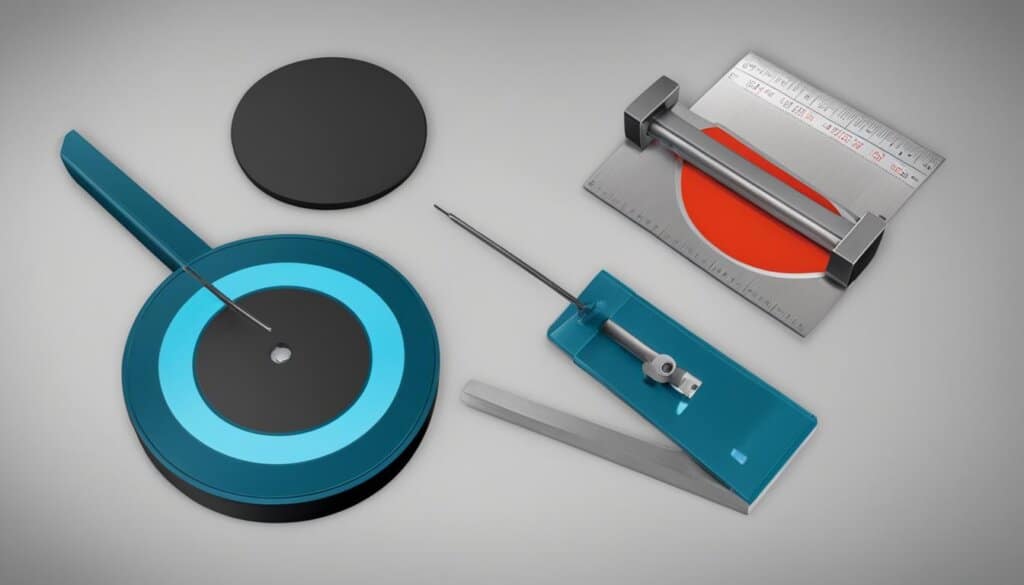
Millimeters in Science and Technology
Millimeters play a crucial role in various scientific and technological applications, demonstrating their versatility and significance. From nanotechnology and materials science to optics and telecommunications, millimeters are employed to measure, manipulate, and observe objects and phenomena at different scales. Furthermore, millimeters facilitate precise data transmission and enable the study of celestial objects in fields like astronomy and astrophysics.
The Scientific Applications of Millimeters
In the field of nanotechnology, millimeters are utilized to measure and manipulate materials at the atomic or molecular scale. This level of precision is essential for developing advanced materials with specific characteristics and properties. The ability to work in millimeters allows scientists and engineers to design and fabricate devices and structures with enhanced functionality and performance.
In materials science, millimeters are employed to analyze the behavior and properties of materials on a microscale. Researchers can investigate the composition, structure, and interactions of materials by using techniques that rely on millimeter-scale measurements. This knowledge contributes to the development of new materials and the improvement of existing ones.
In the field of optics, millimeters are critical for designing and manufacturing optical instruments and components. They ensure precise alignment and positioning, ensuring the accurate transmission and manipulation of light. Millimeter-scale measurements enable scientists and engineers to create optical systems with high resolution, sensitivity, and efficiency.
Millimeters and Telecommunications
Millimeter waves, which operate in the frequency range of 30 to 300 gigahertz, are extensively used in telecommunications. These high-frequency waves allow for faster data transmission rates and greater bandwidth, enabling the development of technologies like 5G networks. Millimeter waves also facilitate wireless communication, contributing to the advancement of mobile and wireless devices.
Applications in Astronomy and Astrophysics
Millimeter observations are a valuable tool in astronomy and astrophysics, enabling scientists to study celestial objects and phenomena. By detecting millimeter waves emitted by astronomical sources, researchers can gather information about the composition, temperature, and motion of celestial objects such as stars, galaxies, and interstellar clouds. Millimeter observations provide unique insights into the formation and evolution of the universe.
Conversion and Comparison of Millimeters
Millimeters serve as a crucial unit of measurement in various applications. Understanding their conversion to other metric units of length is essential for accurate measurements and consistent communication. Here is a breakdown of millimeters’ conversion and a comparison to other units:
Conversion of Millimeters
Millimeters can be converted to other metric units as follows:
| Millimeters | Centimeters | Meters | Kilometers |
|---|---|---|---|
| 1 mm | 0.1 cm | 0.001 m | 1×10-6 km |
Comparison to Other Units
It is also worth noting that 1 millimeter is approximately equal to 0.039 inches. This comparison highlights the difference in scale between the metric and imperial systems of measurement.
Understanding the conversion and comparison of millimeters to other units allows for seamless communication and consistent measurements across different fields and industries.
Conclusion: The Significance of Millimeters
Millimeters hold great significance across various fields and applications. Despite being small units of measurement, they enable precise and accurate measurements, making them essential for scientific research, manufacturing, construction, and everyday sizing. Understanding millimeters and their conversion to other units of length is crucial for effective communication and ensuring consistency in measurements.
Whether you are sizing a ring, building a bridge, or conducting scientific experiments, millimeters play a vital role in achieving accuracy and precision. They allow for fine-tuning and meticulous adjustments, ensuring that objects fit perfectly, components align precisely, and experiments yield reliable results.
In scientific research, millimeter measurements provide the level of detail needed to observe and analyze phenomena at microscopic levels. In manufacturing, millimeters are the standard unit for components, ensuring the correct fit and functionality. In construction, millimeters determine the accuracy of structures, ensuring safety and durability. And in everyday sizing, millimeters ensure that products like clothing and jewelry fit comfortably and as intended.
Mastering millimeter measurements and their significance opens up a world of possibilities in numerous fields, unlocking the potential for innovation, accuracy, and precision. So, the next time you encounter millimeter measurements, remember their importance and the incredible impact they have on our lives.
FAQ
What is a millimeter?
A millimeter (mm) is a small unit of displacement or length in the metric system. It is part of the International System of Units (SI), which is widely used in the fields of science, engineering, technology, and mathematics.
How is the metric system based on decimals?
The metric system is based on decimals, with 10 millimeters making up a centimeter and 1000 millimeters making up a meter. The word “meter” comes from Greek, meaning “measure.”
Why are millimeters important?
Millimeters are important because they allow for precise and accurate measurements of small-scale objects and distances. Without millimeters, it would be difficult to measure or describe the size of small objects such as microorganisms, electronic components, or the thickness of materials.
In what everyday sizing are millimeters used?
Millimeters are used in everyday sizing for various products such as clothing, jewelry, and electronics. For example, when buying a ring, the size is often specified in millimeters to ensure a proper fit.
How are millimeters used in precision measurements?
Millimeters are crucial in precision measurements, particularly in fields such as engineering, manufacturing, and scientific research. They are often used to determine the dimensions of components, the accuracy of machine parts, or the alignment of optical instruments.
What are the scientific applications of millimeters?
Millimeters have widespread applications in science and technology. They are used in fields like nanotechnology and materials science to measure and manipulate materials at the atomic or molecular scale. They are also essential in optics, telecommunications, astronomy, and astrophysics.
How can millimeters be converted to other units of length?
Millimeters can be converted to other metric units of length such as centimeters, meters, and kilometers. For example, 1 millimeter is equal to 0.1 centimeters, 0.001 meters, or 1×10^-6 kilometers.
What is the significance of millimeters?
Millimeters are small units of measurement, but they hold great significance in various fields and applications. They enable precise and accurate measurements, making them essential for scientific research, manufacturing, construction, and everyday sizing.

